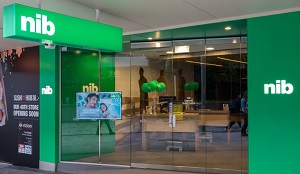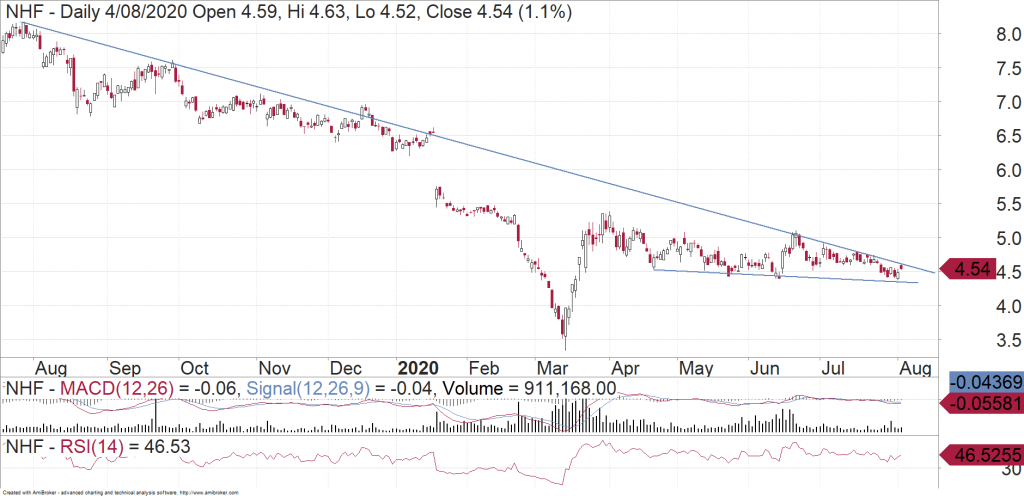We recently reviewed NIB Holdings (ASX:NHF) to assess the impact of COVID-19 on its membership base, the level of claims, and capital position.
About NIB Holdings
NHF is a provider of private health insurance in Australia and NZ and is also a provider of travel insurance and health insurance for inbound international students. The Company’s main competitor in the Australian Private Health Insurance (PHI) industry is ASX-listed company Medibank Private (ASX: MPL).
Key Considerations
How much of the Retained Profits from Claim Savings Will be Retained to Policyholders?
In response to the impacts from COVID-19, the Company implemented a support package for existing nib members and postponed (until at least 1 October 2020) health insurance premium increases for its Australian Residents Health Insurance (ARHI) business. NHF has also offered to suspend cover and has extended product coverage at no additional cost to include COVID-19-related treatment on products that specifically exclude cover (including mental health).
Overall, there has been a significant decline in membership claims. The majority of the claim savings during the COVID-19 shutdown phase are from Hospital claims. Claims for ancillary (or ‘extras’) have been ~40% of the normal level. However, the extent of the savings from a decline in Hospital claims is less clear given greater claim lags.
The claims holiday in as a result of COVID-19 is broadly neutral for the PHI industry insurers, as the majority of elective surgery claims have been put on hold, as opposed to being cancelled. While the claim savings from late March to June could be significant and lead to an uplift in profitability, these profits are unlikely to be retained by the insurers.
Accordingly, net claims savings from COVID-19 appear increasingly likely to be passed on to policyholders in some form – a necessary move in order to reduce participation risks and avoiding more permanent volume impacts.
Macro Conditions Remain Challenging
Prior to COVID-19, the PHI industry was already facing a number of challenges, namely:
– A declining industry penetration rate, as the policyholder base becoming skewed to older people and affordability remains an ongoing issue. It is likely that the penetration rate has continued to decline in recent months and potentially accelerates as unemployment rises in Australia.
– While industry players are attempting to address affordability concerns, this is impacting profitability.
– Increasing waiting times for elective surgery, which are likely to spike higher again as a result of the COVID-19 restrictions. While there is an expected recovery in claims once hospitals are fully operational again, the nature of increasing waiting times highlights that the surgical procedures simply cannot be automatically increased in order to meet the pick-up in demand.
Broadly speaking, we highlight two factors that could release pressure off the hospital system and ultimately save consumers money (by way of reduced claims cost and hence less pressure on premium rates):
i. Substitute inpatient hospital care (which is high-cost care) with lower cost out-of-hospital care. Current legislative restrictions prevent PHI funds from covering out-of-hospital medical services that are covered by Medicare. These include consultations with specialists in their rooms, diagnostic imaging & tests and GP visits.
ii. Holistic patient-centric management of chronic and complex disease in order to reduce demand for hospital admissions.
Adjacent Business Face Challenging Trading Conditions
The Company’s adjacent businesses (i.e. non-ARHI) account for ~25% of group underlying operating profit. Trading conditions in the Travel insurance and International businesses (IIHI) are challenging, but are more favourable within nib NZ, where a COVID-19 claims benefit is expected with slightly lower sales.
The Travel Insurance business currently has a stop-sell of policies in place and will be loss making in FY20 and is likely to suffer a cashflow impact, as it works through past travel claims.
Improved Capital Position May Reverse
The balance sheet is generally in strong shape. Gearing as at 31 December 2019 was 28% (on a total debt to (debt + equity) basis) and in line with NHF’s long-term average gearing target of 30%. Further, interest cover is strong, at 28x and there are no immediate refinancing requirements (the next debt maturity is December 2021).
Importantly, since 31 December 2019, the available capital has strengthened. However, the capital position is likely to be tempered by the possibility of member compensation and provisioning for a recovery in claims. Further, the expected recovery in claims may place pressure on operating cashflows over the next two financial years, especially as these are likely to rise in excess of any premium increases.
Fundamental View
The uncertainty about the trajectory in claims recovery and the extent to which any possible cash refund or member compensation impacts profitability are key factors impacting ASX-listed private health insurers. More specific to NHF:
i. NHF’s membership skew is toward younger cohorts, which may result in more volumes being permanently cancelled. While this may result in a greater boost to profit, it also makes estimating the level of claims recovery for NHF more difficult.
ii. Given the skew towards a younger demographic, NHF’s policyholder base appears to be more at risk than MPL’s in coming months and to this end we note that NHF’s policyholder growth has been slightly more negatively impacted than that for MPL. Accordingly, NHF will likely have to offer as much incentive to retain marginal members as possible.
iii. A meaningful portion of its earnings are exposed to an economic slowdown arising from COVID-19 (namely the IIHI and travel insurance businesses). This may account for the fact that MPL is currently trading at a premium to NHF (at ~21x FY21 EPS), as MPL does not have these divisional headwinds.
iv. NHF’s policyholder growth rate is unfavourable relative to MPL’s.
Accordingly, we take a cautious view on the fundamentals, especially as NHF is trading on an unappealing FY21 P/E of ~16.5x, which is slightly below the average over the last five years.
Charting View of NIB Holdings
Just looking at the price action from the last few months, NHF seems to be doing OK. It bounced strongly in March, consolidated that move by trading sideways. However, looking a daily chart over the last year, we can see that the shares were in a downtrend before the start of this calendar year. Not only that, but its recent peak near $5 saw it turn south right on that longer term downtrend line. At this rate, it appears as though NHF will continue to slide. The chart will look better if it can rally above $5 and close above that downtrend line. At the moment though, the range seems to be tightening so it will be interesting to see which way it wants to break first.

Michael Gable is managing director of Fairmont Equities.
Current share prices available here.
You can learn more about technical analysis in this article.
An 8-week FREE TRIAL to The Dynamic Investor can be found HERE.
Would you like us to call you when we have a great idea? Check out our services.
Disclaimer: The information in this article is general advice only. Read our full disclaimer HERE.
Like this article? Share it now on Facebook and Twitter!

